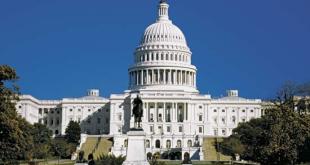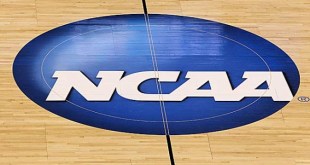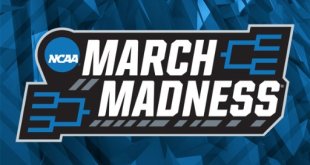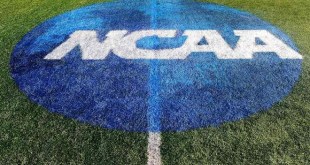Tweet
So the Chicago regional office of the NLRB ruled that Northwestern is an employer and that its football players are employees who may elect to form a union. The decision however did not directly address the NCAA. At first glance the NCAA may not be bound by this decision since it is not labeled as the “employer.” However, what is to stop the NCAA from deploying its nuclear option and simply creating a bylaw stating that any player in a union or any player who is an “employee” is ineligible for competition. Well, there are two main obstacles, one from a practical perspective, and another from the legal side. Let’s begin with the legal element.
The NCAA may not think it is bound by the decision of the NLRB, but it should be very careful in how it proceeds. The concept of a “joint employer” is intended to prevent employers from setting up shell operations to avoid responsibility under laws such as the National Labor Relations Act (NLRA) or the Fair Labor Standards Act (FSLA). Assuming that the concept of schools as employers of athletes stands, there seems to be a very good argument to be made that the NCAA is in fact a joint employer of student athletes.
The foundational case for joint employer law is Bonnette v. California Health and Welfare Agency (704 F.2d 1465 (9th Cir 1983). In that case the issue was whether or not a state welfare agency was a joint employer of in-home caregivers. The court determined a four part test (which was a useful framework not a rigid test) to analyze the issue. The court looked at whether or not the alleged joint employer: (1) had the power to hire and fire employees; (2) supervised and controlled employee work schedules or conditions of employment; (3) determined the rate and method of payment, and (4) maintained employment records. Under such a framework it seems very likely that the NCAA would be a joint employer.
While the schools maintain the autonomy over who to offer scholarships and who to keep on the team (hiring and firing), the NCAA controls work schedules and conditions of employment through its Bylaws which mandate certain GPAs and limit work hours. Additionally, the NCAA stipulates the amounts which can be paid as a scholarship (rate and method of payment), and the NCAA maintains employment records (eligibility history, grades, violation history, and participation records). Under this analysis, there would appear to be little doubt that the NCAA would be a joint employer under the NLRA, which would then prohibit the NCAA from establishing any bylaws which would have a “anti-union animus.” Furthering the support for this theory is the fact that courts have recognized professional leagues as joint employers, most notably the NFL in the star caps decision
While many circuits have adopted the Bonnette test, other circuits have rejected it or expanded upon it. The Second Circuit has reasoned that the Bonnette test only focuses on formal control and does not analyze functional control. In Zheng v. Liberty Apparel Co., Inc., (355 F.3d 61, 2d Cir 2003) the Second Circuit laid out six factors beyond those in Bonnette to analyze whether an alleged joint employer had functional control over employees. The Zheng factors (as they have come to be known) include: (1) whether the worker uses the alleged joint employer’s premises and equipment; (2) whether the worker has a business that can or does operate with more than one possible joint employer; (3) whether the worker performs a discrete “line job” that is integral to the alleged joint employers process of production; (4) whether the worker can transfer its contract to other contractors without material changes to the contract; (5) the degree to which the alleged joint employer supervises the work; and (6) whether the workers work exclusively for the alleged joint employer.
Analyzing the Zheng factors muddies the waters as compared to the clear picture from the Bonnette test, but ultimately they appear to provide little relief for the NCAA. While it is true that the athletes do not use the NCAA premises or equipment, and do not have a business that could operate for more than one contractor, it does appear that the rest of the Zheng factors apply. Athletes perform the athletic equivalent of a line job (playing their sport). They are not involved in the other factors of producing college football (licensing, tv contracts, stadium contracts, ect). While individual scholarships are non transferable, athletes often transfer schools and sign new scholarships on exactly the same terms. As stated in the NLRB decision, the schools, (under the control of NCAA bylaws) exert a great deal of control over athletes. Finally, the athletes may not participate in other organized competitions and in this sense work exclusively for the NCAA.
The NCAA could look to Jean-Louis v. Metropolitan Cable Comm., Inc., (2011 WL 4530334 SDNY Sept 30 2011) for some interesting case precedent. In that case a district court using a combined Bonnete/Zheng analysis, found that a national cable company was not a joint employer of cable installers hired by a contractor. Despite arguments that the cable company could essentially fire workers by “deauthorizing” them (akin to the NCAA ruling an athlete ineligible) and the fact that the cable company could control the time windows in which the workers had to perform the installations, the court still ruled that the cable company was not a joint employer. The Fourth Circuit came to a similar conclusion in the same industry in Jacobson v Comcast Corp. (740 F.Supp.2d 683 Md 2010) basing its decision on the fact that the workers did not use the alleged joint employer’s premises or equipment, and the fact that the contracts could not be transferred without material change. However, given the vast differences between the business of collegiate sports and that of cable installers, the impact of Jean-Louis for the NCAA would appear to be minimal. 
Other courts instead look to the level of integration between the actual employer and the alleged joint employer. In Keeton v. Time Warner Cable, Inc. (WL 2618926 SD Ohio 2011) the Sixth Circuit adopted a four factor test first that looks at: (1) the interrelation of operations between the alleged joint employers; (2) whether there was common management; (3) whether there was “centralized control of labor relations” and (4) whether there was common ownership between the alleged employers. This framework would perhaps give the NCAA its best chance to not be found a joint employer.
While there is some degree of interrelation of operations between an athletics department and the NCAA, that relationship and interrelation is pretty limited to the realm of athletics compliance. The NCAA does not determine ticket prices for example, or if alcohol may be sold at events or other essential aspects of producing the product of collegiate football. While the NCAA board of governors is comprised of university employees, the employees of the NCAA who run the day to day business are not related to any academic institution. There would appear to be some level of centralized control of labor relations as the NCAA strictly outlays how the schools may run their athletics programs when it comes to the athletes. Finally, there is not common ownership between the NCAA and any institution in the sense of an “affiliated party” or subsidiary.
Despite the Sixth Circuit’s approach it would seem more likely than not that the NCAA would be considered a joint employer of collegiate athletes and would therefore be subject to the laws of the NLRA which would require it to not engage in anti-union behavior.
The more practical reason why the NCAA would struggle to enact anti-union bylaws is that its bylaws are voted on by university representatives who may already be subject to the NLRA as the employers of athletes. A representative voting to rule union athletes ineligible would arguably run afoul of the NLRA.
Thus, it would appear that while the recent NLRB regional decision limits the employer relationship to the school, the NCAA should still tread lightly when it comes to addressing the issue of collegiate athletes as employees.
 The Sports Esquires Putting Sports on Trial
The Sports Esquires Putting Sports on Trial





One comment
Pingback: Because I Said So: Paternal Court Rules Penn Student Athletes Are Not Employees - The Sports Esquires